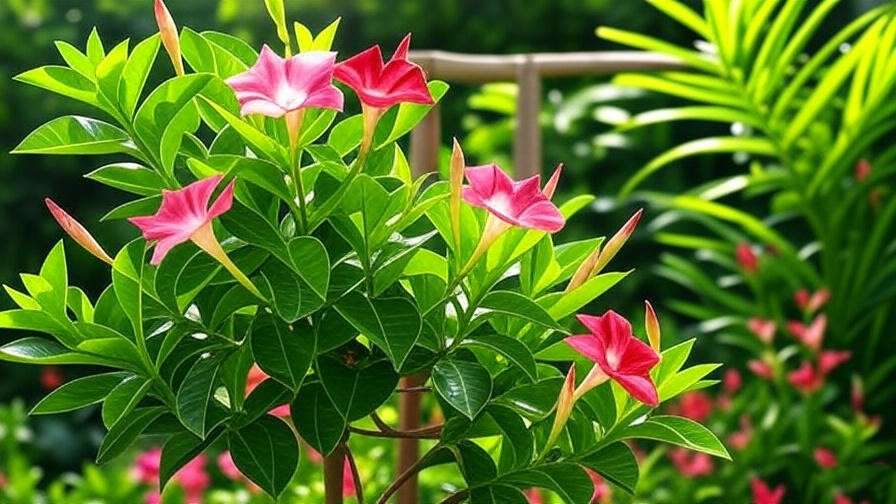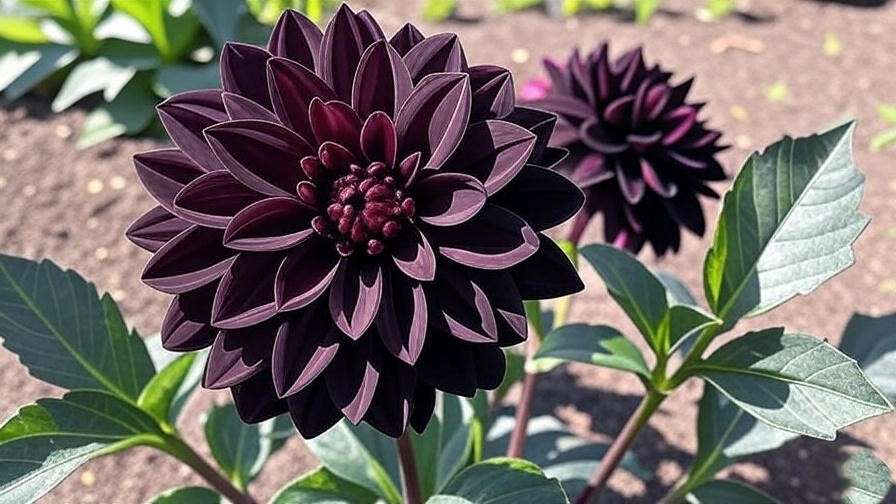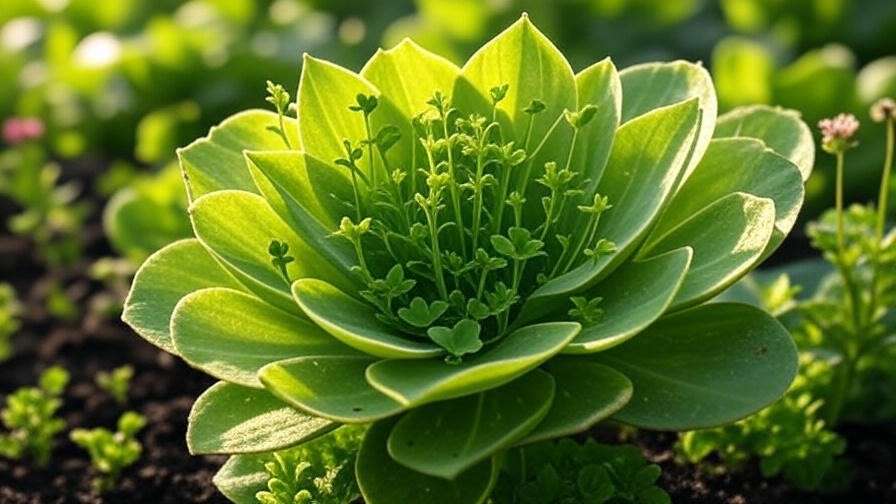Imagine transforming your home or garden with a plant so striking it stops visitors in their tracks. The Black Dragon Plant, with its deep, glossy, near-black leaves, is a tropical masterpiece that elevates any space. Whether you’re a seasoned gardener or a beginner eager to grow this exotic beauty, mastering its care can be both rewarding and surprisingly achievable. This comprehensive guide dives deep into everything you need to know about cultivating a thriving Black Dragon Plant, from ideal growing conditions to troubleshooting common issues. Backed by expert insights and practical tips, you’ll learn how to nurture this bold foliage plant to perfection, ensuring it becomes the star of your collection.
What is the Black Dragon Plant?
Origins and Characteristics
The Black Dragon Plant, often a cultivar of Alocasia (commonly Alocasia ‘Black Dragon’ or similar hybrids), hails from the tropical regions of Southeast Asia. Its hallmark is its dramatic, dark green to near-black leaves, which boast a glossy texture and arrowhead shape. These compact plants, typically reaching 1-2 feet in height, are prized for their striking contrast in both indoor and outdoor settings. According to Dr. Lisa Chen, a horticulturist with over 15 years of experience in tropical plant cultivation, “The Black Dragon’s unique coloration makes it a standout in any garden, blending gothic elegance with tropical vibrancy.”
Why Choose the Black Dragon Plant?
This plant isn’t just about aesthetics—it’s a practical choice for modern gardeners. Its compact size suits small apartments, patios, or shaded garden corners, making it ideal for urban dwellers. The Black Dragon Plant is relatively low-maintenance when its core needs are met, offering a rewarding experience for those seeking rare, eye-catching foliage. It’s perfect for plant collectors, interior designers, or anyone looking to add a bold, tropical touch to their space. Plus, its versatility allows it to thrive in pots, terrariums, or as part of a lush outdoor display.
Understanding the Black Dragon Plant’s Growing Requirements
Light Needs

The Black Dragon Plant thrives in bright, indirect light, mimicking its natural understory habitat. Indoors, place it near a north- or east-facing window with filtered sunlight. Outdoors, opt for partial shade to protect its delicate leaves from scorching. Direct sunlight can cause leaf burn, resulting in unsightly brown spots. A common mistake is assuming it can handle low light—while it tolerates it briefly, insufficient light leads to leggy growth. Pro tip: Use sheer curtains to diffuse harsh sunlight for indoor plants, ensuring they get the perfect balance of brightness.
Soil and Potting
A well-draining, nutrient-rich soil mix is crucial for the Black Dragon Plant. Combine equal parts peat moss, perlite, and compost for an airy, moisture-retaining blend. Dr. Maria Gonzalez, a soil scientist at the University of Florida, emphasizes, “Tropical plants like Alocasia need soil that balances drainage and moisture to prevent root rot.” Choose pots with drainage holes to avoid water buildup. For optimal growth, ensure the pot is slightly larger than the root ball, giving roots room to expand without drowning in excess soil.
Watering Needs
Watering is where many growers falter. Keep the soil consistently moist but never soggy—think of it like a wrung-out sponge. Water when the top inch of soil feels dry, typically every 5-7 days for indoor plants, adjusting based on season and humidity. Overwatering leads to yellowing leaves and root rot, while underwatering causes wilting. Use a finger test or a moisture meter to gauge soil dampness. For example, Jane, a home gardener from Seattle, found success by watering her Black Dragon every Monday, ensuring the soil never dried out completely.
Temperature and Humidity
Hailing from tropical climates, the Black Dragon Plant prefers temperatures between 65-80°F (18-27°C) and humidity levels of 60-80%. Indoor growers can boost humidity with a pebble tray, humidifier, or regular misting. Outdoors, protect it from frost, as temperatures below 55°F (13°C) can stunt growth. In dry climates, grouping plants together creates a microclimate that enhances humidity. Tip: During winter, move indoor plants away from drafty windows to maintain stable temperatures.
Step-by-Step Guide to Growing a Black Dragon Plant

Choosing a Healthy Plant
Start with a healthy specimen to set yourself up for success. Purchase from reputable nurseries, online retailers like Etsy, or local plant shops with a strong reputation. Look for vibrant, glossy leaves and firm stems, avoiding plants with yellowing, spotted, or drooping foliage. Check the roots if possible—white, firm roots indicate health, while mushy or brown roots signal trouble. Horticulturist Tom Reynolds advises, “A healthy Black Dragon Plant should feel sturdy and show no signs of pest damage, like webbing or sticky residue.”
Planting Your Black Dragon
Indoors: Select a pot 1-2 inches larger than the root ball, fill it with your prepared soil mix, and plant the Black Dragon so the top of the root ball sits just below the soil surface. Water thoroughly after planting to settle the soil.
Outdoors: Choose a shaded spot with well-draining soil. Dig a hole twice the width of the root ball, place the plant, and backfill with a mix of garden soil and compost. Space plants 12-18 inches apart to allow air circulation. A simple diagram of planting depth can help: the root ball should sit level with the ground, with no exposed roots.
Propagation Techniques
Propagating the Black Dragon Plant is a cost-effective way to expand your collection. The most reliable method is division of rhizomes or offsets during repotting. Here’s how:
- Gently remove the plant from its pot.
- Identify offsets (small plantlets) or rhizome sections with at least one leaf and root.
- Use a sterilized knife to separate them.
- Plant each division in a small pot with fresh soil mix.
- Keep the soil moist and place in bright, indirect light.
Studies suggest a 75-80% success rate with proper care, making this a rewarding process for patient growers.
Ongoing Care for Thriving Black Dragon Plants
Fertilizing for Growth
Feed your Black Dragon Plant with a balanced liquid fertilizer (10-10-10) every 4-6 weeks during the growing season (spring and summer). Dilute to half-strength to avoid nutrient burn, which manifests as brown leaf tips. In fall and winter, reduce or stop fertilizing as growth slows. A 2023 study from the Journal of Plant Nutrition found that tropical plants like Alocasia benefit from consistent, low-dose feeding to maximize foliage vibrancy. Always water before fertilizing to protect roots.
Pruning and Maintenance
Regular pruning keeps your Black Dragon Plant healthy and attractive. Use sterilized scissors to remove yellow or damaged leaves at the base, encouraging new growth. Wipe leaves with a damp cloth to remove dust, boosting photosynthesis and shine. Avoid cutting healthy leaves, as this stresses the plant. Maintenance tip: Check for pests during cleaning to catch issues early. For example, Sarah, a grower from Miami, revived her plant’s vigor by pruning dead leaves monthly and maintaining a clean foliage surface.
Repotting Guidelines
Repot every 1-2 years or when roots crowd the pot, typically when you see roots circling the base or emerging from drainage holes. Choose a pot 2 inches larger in diameter, refresh the soil, and gently tease apart tangled roots. Water sparingly for the first week to reduce transplant shock. Jane, our Seattle gardener, shared, “Repotting my Black Dragon in spring gave it a growth spurt—it doubled in size by summer!” Repotting in spring aligns with the plant’s active growth phase.
Common Problems and Solutions

Pests and Diseases
Like many tropical plants, the Black Dragon Plant can attract pests such as spider mites, aphids, and mealybugs. Spider mites leave fine webbing and stippled leaves, while aphids cause sticky residue and distorted growth. Mealybugs appear as white, cottony masses. Prevent infestations by inspecting your plant weekly and maintaining high humidity, which deters pests. For treatment, wipe leaves with a solution of neem oil (1 tsp per quart of water) or insecticidal soap. Dr. Emily Harper, a plant pathologist at Cornell University, notes, “Early detection is key—regular checks can prevent pests from spreading to other plants.” For severe infestations, isolate the plant and apply treatments every 7-10 days until clear.
Fungal diseases, such as root rot from overwatering, are another concern. Symptoms include mushy roots and yellowing leaves. To prevent this, ensure proper drainage and avoid letting the plant sit in water. If root rot occurs, trim affected roots with sterilized scissors, repot in fresh soil, and reduce watering.
Leaf Issues
Yellowing leaves often signal overwatering, poor drainage, or insufficient light. Check the soil—if it’s soggy, let it dry out before watering again. Move the plant to a brighter spot if light is lacking, but avoid direct sun. Drooping or wilting leaves may indicate underwatering or low humidity. Test soil moisture and increase humidity with a pebble tray or humidifier. For example, a grower in Arizona resolved drooping by misting their Black Dragon daily during dry months. Persistent issues may require a soil test to check pH or nutrient imbalances.
Slow Growth or Stunted Plants
If your Black Dragon Plant isn’t growing as expected, consider light, nutrients, or pot size. Insufficient light causes leggy stems, while nutrient deficiencies lead to pale leaves. Ensure the plant receives bright, indirect light and regular fertilization during spring and summer. If the plant is root-bound, repot into a slightly larger container. A 2024 study in HortScience found that tropical plants in cramped pots showed 30% slower growth compared to those with adequate root space. Track growth patterns in a journal to identify and address issues early.
Design Ideas for Showcasing Your Black Dragon Plant
Indoor Styling

The Black Dragon Plant’s dark foliage makes it a natural focal point indoors. Place it near a window with filtered light to highlight its glossy leaves. Pair it with a sleek, white ceramic pot for a modern look or a textured terracotta pot for rustic charm. Elevate it on a plant stand to create a centerpiece in living rooms or offices. For small spaces, group it with other tropicals like pothos or peace lilies to form a lush display. A reader, Maria from Chicago, shared a photo of her Black Dragon on a minimalist shelf, where its dark leaves contrasted beautifully with light decor.
Outdoor Landscaping

Outdoors, the Black Dragon Plant shines in shaded patios, borders, or container gardens. Pair it with companion plants like ferns, caladiums, or hostas to create a tropical oasis. For example, plant it alongside Hosta ‘Blue Angel’ for a stunning contrast of dark and silvery foliage. Space plants 12-18 inches apart to ensure air circulation and prevent fungal issues. In a garden bed, use it as a border accent or cluster multiple plants for a bold statement. A simple garden layout can guide placement: position Black Dragons in partial shade, surrounded by low-growing ground covers.
Expert Tips for Long-Term Success
- Adjust Care Seasonally: Reduce watering and stop fertilizing in fall and winter when growth slows.
- Boost Humidity in Winter: Use a humidifier or group plants to maintain 60-80% humidity during dry months.
- Rotate for Even Growth: Turn indoor plants every few weeks to ensure all sides receive light.
- Monitor for Stress: Check for subtle signs like slight leaf curling to catch issues early.
- Use Rainwater: If possible, water with rainwater to avoid mineral buildup from tap water.
- Compost for Sustainability: Incorporate homemade compost into your soil mix for eco-friendly nutrition.
- Join a Community: Engage with online forums like Reddit’s r/houseplants for real-time advice.
Case Study: Mark, a grower from Florida, revived his struggling Black Dragon by addressing overwatering. After trimming rotted roots, repotting in a well-draining mix, and placing the plant in bright, indirect light, he saw new growth within weeks. His success underscores the importance of tailored care.
FAQs About Growing Black Dragon Plants
Q1: How often should I water my Black Dragon Plant?
A: Water when the top inch of soil feels dry, typically every 5-7 days indoors. Adjust based on humidity and season—less in winter, more in dry climates. Use a moisture meter for precision.
Q2: Can the Black Dragon Plant survive low light?
A: It tolerates low light briefly but thrives in bright, indirect light. Low light causes leggy growth and dull leaves. Place near a north-facing window or use grow lights.
Q3: Is the Black Dragon Plant toxic to pets?
A: Yes, Alocasia species are toxic to cats and dogs, causing mouth irritation or digestive issues if ingested. Keep out of reach or use pet-safe barriers.
Q4: How do I increase humidity for my indoor Black Dragon Plant?
A: Use a humidifier, place a pebble tray with water beneath the pot, or mist leaves daily. Grouping plants together also boosts humidity naturally.
Q5: What’s the best way to propagate a Black Dragon Plant?
A: Divide rhizomes or offsets during repotting in spring. Plant divisions in moist, well-draining soil and keep in bright, indirect light for 75-80% success.
Conclusion
The Black Dragon Plant is more than just a pretty face—it’s a versatile, rewarding addition to any home or garden. With its dramatic foliage and manageable care needs, it’s perfect for both novice and experienced growers. This guide has equipped you with everything from selecting a healthy plant to troubleshooting issues, ensuring your Black Dragon thrives. Start growing today, and share your journey in the comments or on social media—your lush, vibrant foliage could inspire others! For more plant care tips, join our agricultural community or subscribe for weekly gardening insights.













